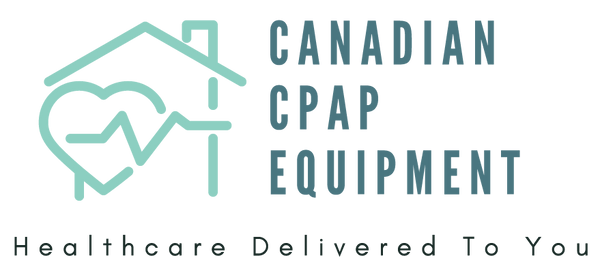Continuous Positive Airway Pressure (CPAP) therapy is widely recognized as the most effective and common treatment for Obstructive Sleep Apnea (OSA). Its ability to maintain an open airway during sleep has revolutionized the management of this condition. However, CPAP is not the only solution, and for various reasons – from intolerance to mask discomfort, or for individuals with milder forms of sleep apnea – other treatment options exist. Before exploring alternatives, it’s important to start with an accurate diagnosis through an at-home sleep apnea test, which helps ensure you and your healthcare provider choose the most effective treatment plan. Understanding these alternatives can help you and your healthcare provider determine the best path forward for your unique needs.
It's important to note that any treatment decision should be made in consultation with a sleep-trained respirologist or sleep specialist, who can assess your specific condition and recommend the most appropriate therapy.
1. Oral Appliances (Mandibular Advancement Devices - MADs)
-
What they are: These are custom-made dental devices, similar to a mouthguard, that are worn during sleep. They work by repositioning the lower jaw and/or tongue forward, which helps to keep the airway open and prevent it from collapsing.
-
Best for: Typically recommended for individuals with mild to moderate OSA, or for those with severe OSA who cannot tolerate CPAP therapy.
-
Benefits: Portable, less intrusive than CPAP, and can be very effective for the right candidate.
- Considerations: Requires a custom fitting by a dentist specializing in sleep medicine. May cause jaw discomfort, tooth movement, or excessive salivation initially.
2. Lifestyle Modifications
While rarely a standalone solution for moderate to severe sleep apnea, lifestyle changes can significantly improve symptoms, especially in mild cases, and complement other treatments.
-
Weight Loss: Even a modest reduction in weight can significantly improve sleep apnea symptoms, as excess weight around the neck can contribute to airway obstruction.
-
Positional Therapy: For individuals whose sleep apnea is worse when sleeping on their back (supine position), positional therapy involves strategies to encourage side sleeping. This can include special pillows or devices that prevent rolling onto the back.
-
Avoiding Alcohol and Sedatives: Alcohol and certain sedatives relax the muscles in the throat, worsening airway collapse. Avoiding them, especially before bedtime, can reduce the frequency and severity of apneic events.
-
Smoking Cessation: Smoking can increase inflammation and fluid retention in the upper airway, exacerbating sleep apnea.
- Nasal Decongestants/Steroids: For individuals with nasal congestion, using nasal sprays or other decongestants can improve airflow and reduce snoring.
3. Surgical Interventions
Surgery for sleep apnea aims to remove or stiffen excess tissue in the throat or reposition structures to enlarge the airway. Surgical options are generally considered for individuals who have not responded to or cannot tolerate CPAP or oral appliances, or for those with specific anatomical abnormalities.
-
Uvulopalatopharyngoplasty (UPPP): This is one of the most common surgical procedures for OSA, involving the removal of excess tissue from the soft palate, uvula, and tonsils to widen the airway.
-
Genioglossus Advancement (GA): A procedure that moves the tongue muscle forward to prevent it from collapsing into the airway.
-
Maxillomandibular Advancement (MMA): A more extensive surgery that moves both the upper and lower jaws forward, significantly enlarging the airway. This is often considered for severe cases.
-
Hypoglossal Nerve Stimulation (e.g., Inspire): A newer, minimally invasive surgical option that involves implanting a device that stimulates the hypoglossal nerve, which controls tongue movement. This keeps the airway open during sleep. It is typically for moderate to severe OSA patients who cannot use CPAP.
- Tonsillectomy and Adenoidectomy: Often effective for children with OSA caused by enlarged tonsils and adenoids.
4. Emerging Therapies and Research
The field of sleep medicine is constantly evolving, with ongoing research into new and improved treatments. These include:
-
Expiratory Positive Airway Pressure (EPAP) Devices: Small, disposable devices placed over the nostrils that create back pressure during exhalation to keep the airway open.
- Drug Therapies: While no specific drug cures sleep apnea, some medications are being investigated to stimulate upper airway muscles or reduce sleepiness.
Choosing the Right Treatment for You
The decision of which sleep apnea treatment is best for you is a highly individualized one. It depends on several factors, including:
- The severity of your sleep apnea.
- The underlying cause (e.g., anatomical issues, central vs. obstructive).
- Your overall health and other medical conditions.
- Your personal preferences and tolerance for different therapies.
- The potential risks and benefits of each option.
Always have an open and honest discussion with your sleep specialist. They can help you weigh the pros and cons of each treatment, ensuring you choose the path that leads to the most effective and sustainable solution for your sleep apnea.
Next Steps: Understanding the connection between sleep apnea and weight is crucial. In our next post, we will explore how sleep apnea and weight management are intertwined.

